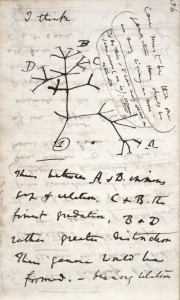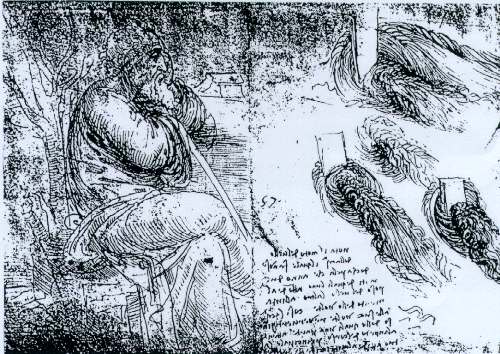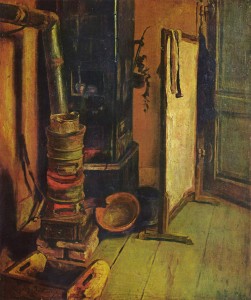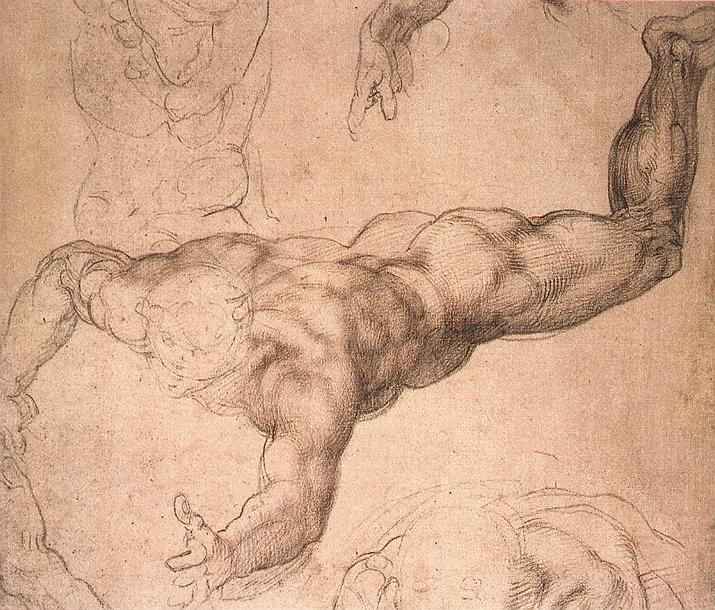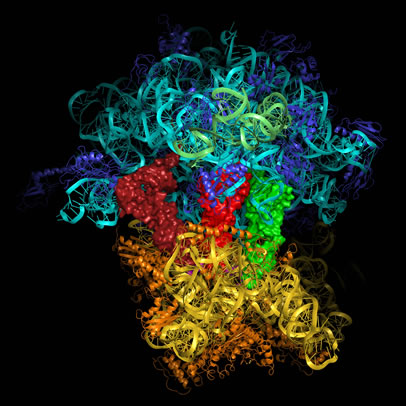What can scientists learn from artists?
January 26, 2014
In comparing approaches to art and science, I notice that certain shared skills tend to be better taught to artists while others are addressed more clearly in science lessons. Let’s look, today, at aspects of the artistic approach that some scientists may find helpful. My intention here is not to be unfairly critical, but to trigger positive discussion.
If you are an artist, then do read on because these ideas may set you thinking.
If you are a scientist, then you may or may not find this list helpful. Perhaps you are already using these techniques, see no practical place for them, or disagree with some of my assumptions? On the other hand, if you feel lacking in direction or otherwise “stuck”, then this article could perhaps be useful to you. Please read on and feel free to add your own thoughts in the comments box at the end.
.
Above: A page from the notebooks of Charles Darwin, 1837-8
Observing and recording all that is interesting
The ability to observe and consider everything around you…looking, listening (and smelling, tasting, or whatever is appropriate), is key to scientific enquiry. While techniques of methodical observation are taught in science classes, a delight in a general awareness of our surroundings is , in my experience, encouraged more in art than science departments.
Art students are sent out with sketchbooks and encouraged to make observations, drawings and notes. The same approach with portable blank book and pen could be just as practical for the curious scientist. As with an artist’s sketchbook:
- you can take the book anywhere, from airport to park
- anything can be included, whether words, numbers or simple sketches (even if you feel that you “can’t draw”, it is fine to record visual or conceptual ideas using directional lines and simple shapes).
- an ideas book can be used to record what you see and what you think
- many of the ideas will probably come to nothing, while the occasional page may contain seeds of a new line of enquiry. Keep old completed books even if they seem to be full of hopeless scribble as, in years to come, you may look back through them with greater insight.
Above: Leonardo da Vinci. Notebook studies of both a seated figure and of turbulent flow. Note the association of flowing robes and turbulence images. The continuous format of a notebook or sketchbook encourages a sequence of interesting ideas. It is of course also possible to create an imaginative ideas book without being a master draughtsman.
Being ready to seek inspiration from anywhere
Young artists are encouraged to seek something interesting from the most mundane situations. They might be expected to look afresh at a single piece of drapery, the surface of a puddle or the corner of a room and then create an original image.
Should scientists take, at times, a similar approach?
The great physicist, Richard Feynman, said:
“I don’t know anything, but I do know that everything is interesting if you go into it deeply enough”.
Above: Eugene Delacroix “A corner of the studio” 1830, oil on canvas
Learning from your own emotional responses
Good art teachers remind students to be aware of their own emotional response to each object or situation. On the other hand, scientists are expected to be highly-objective in recording what they see and emotional involvement is therefore often discouraged.
Of course, objectivity is essential at certain times, e.g. when recording sets of values. However, there are occasions when an emotional response can help to direct you to initial observations that are surprising, and hence to those that may warrant further investigation.
For example, in studying canine movement recently, I came across this video of a galloping greyhound:
I set about looking at the video to record objective data for an assignment (limb step sequence, etc.)
However, the first thing that struck me about this was the rather alarming, even frightening appearance of the running dog. I asked myself what could be giving this dog such a “scary” look when running – he appears perfectly benign at the end of the video when resting on the grass. I concluded that the alarming appearance resulted from the dog’s dramatic up/down head movements with mouth gaping, teeth exposed and whites of eyes becoming visible at each head rise. (Indeed, if I cover his head, he no longer looks scary to me). What was initially an emotional response to the video could send me along several fresh lines of enquiry….”Why does the greyhound move his head up and down more than the cheetah?”; ” Is the mouth opening passively as he raises the head, or is this a sharp intake of breath” (“is breathing coordinated with running and, if so, how?”) “The downward roll of the eyes appears to be part of a set of known reflexes caused by changing neck position but I’d not noticed it before in a galloping animal…is eye movement always so extreme in running dogs…and other species?” And even, changing the subject somewhat, “do most people tend to see flashing whites of eyes as menacing?”
Don’t worry…I did also remember to record the objective data as originally planned.
A positive use of subjective language
When making sets of observations, scientists need to work systematically and objectively and record measurements in standard units.
However, additional subjective observation can provide a wealth of extra information, and having a meaningful descriptive vocabulary at your fingertips can be useful. For example, you may observe something as “lurching”, “bulging”, “swinging” or “sagging”, or hear it go “crunch”, “slosh” or “pop”. These are all unscientific words, but each may have a specific meaning to you. Use of such words can help both in understanding what is happening in a general sense, communicating with others (especially lay-people) and in directing future objective analysis.
Above: “Head of a Black Cockatoo” engraved by T.W.Wood. From The Malay Archipelago by Alfred Russel Wallace
The naturalist and explorer, A.R.Wallace, came to original conclusions about natural selection from his observations. His diaries and notes include much colourful description backed up with objective data. An example of his subjective writing describes the bird pictured above:
“This cockatoo is the first I have seen, and is a great prize. It has a rather small and weak body, long weak legs, large wings, and an enormously developed head, ornamented with a magnificent crest, and armed with a sharp-pointed hoofed bill of immense size and strength…”
The cockatoo’s remarkably strong head and beak and surprising plumage turn out to be specific evolutionary adaptations. Wallace’s subjective approach was key to his understanding of relationships between species and their environment. Of course, he recorded numerous measurements and other objective data along the way.
An artist’s approach to combining subjective and objective description:
Above: A sketch for the Sistine Chapel by Michelangelo. This image includes clear rendering of muscles of the limbs and trunk. However, this drawing is primarily about the process of “reaching out forward”, and its gestural quality tells us more about the body than we can glean from dry anatomy texts.
Use of analogies and metaphors
Some phenomena are so strange or unexpected that it is difficult to understand their implications without relating them to what we already know well.
Analogies are used by good science teachers (click here for an online resource on teaching with analogies). A beautiful example enables us to “get our heads around” the massive scale of our solar system. Astronomical figures initially seem meaningless, but a model using familiar objects helps us to understand and engage with the huge distances. In the Thousand-Yard Model, familiar objects represent each planet, so the Earth is a peppercorn, Jupiter a chestnut, etc. The Sun is a bowling ball. These objects are taken outside and placed at specific distances from one another to represent their relative spacing in the solar system. The resulting model solar system is a thousand yards across and is quite awe-inspiring. Full instructions on pacing out the Thousand Yard Model are provided by Guy Ottewell and can be accessed by clicking here.
But are there other areas of science where analogies are under-used? Imaginative comparison is key to the visual arts and of course to poetry. But does an emphasis on objective reasoning leave some scientists without these useful tools?
The confidence to pursue whatever fascinates you
Above: The structure of a ribosome, an essential component of all living cells.
While artists are often encouraged to follow their interests and passions, young scientists perhaps more easily find themselves following lines of enquiry dictated by perceived need, available funding or, at a school level, by a specific syllabus. Is this a cause for concern?
When asked by the Observer, “What words of advice would you give to a teenager who wants to pursue a career in science?“, Venkatraman Ramakrishnan, who shared the 2009 Nobel prize for chemistry for studies of the structure and function of the ribosome said,
“Find out what really fascinates you and follow that. Almost anything in nature, if you follow it, you will find a scientific problem.”
Error: Contact form not found.
